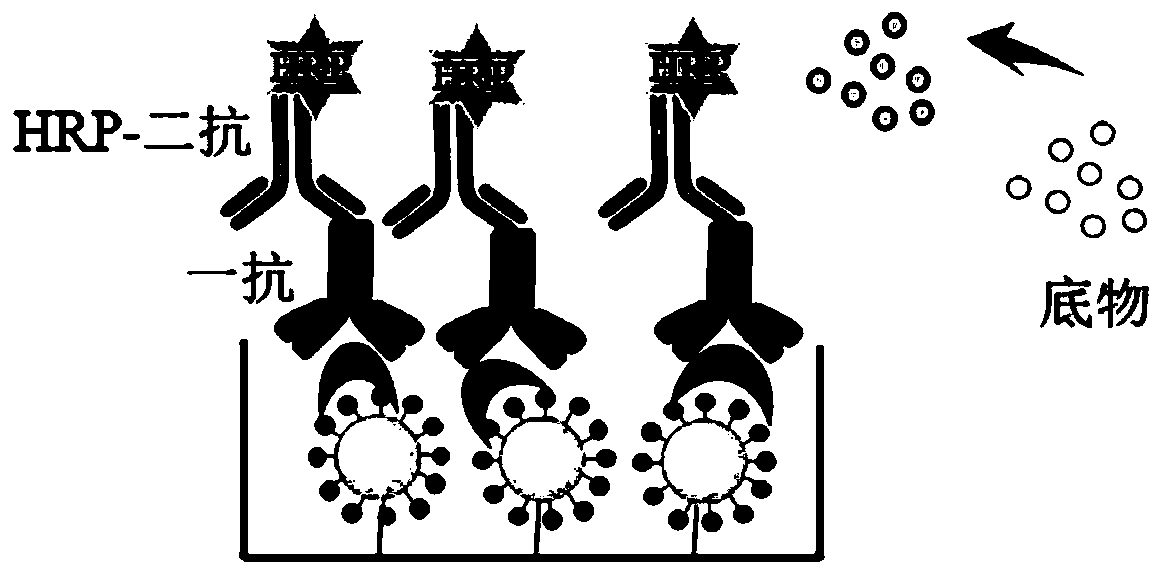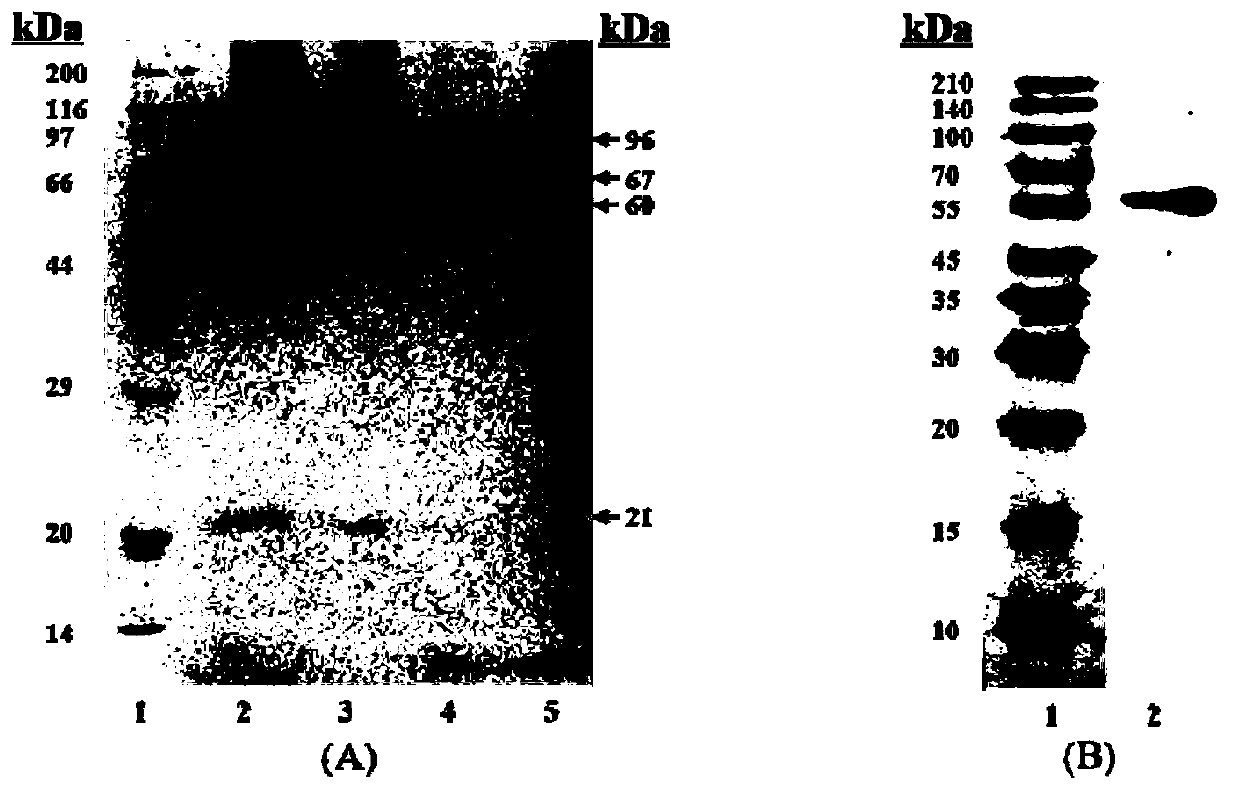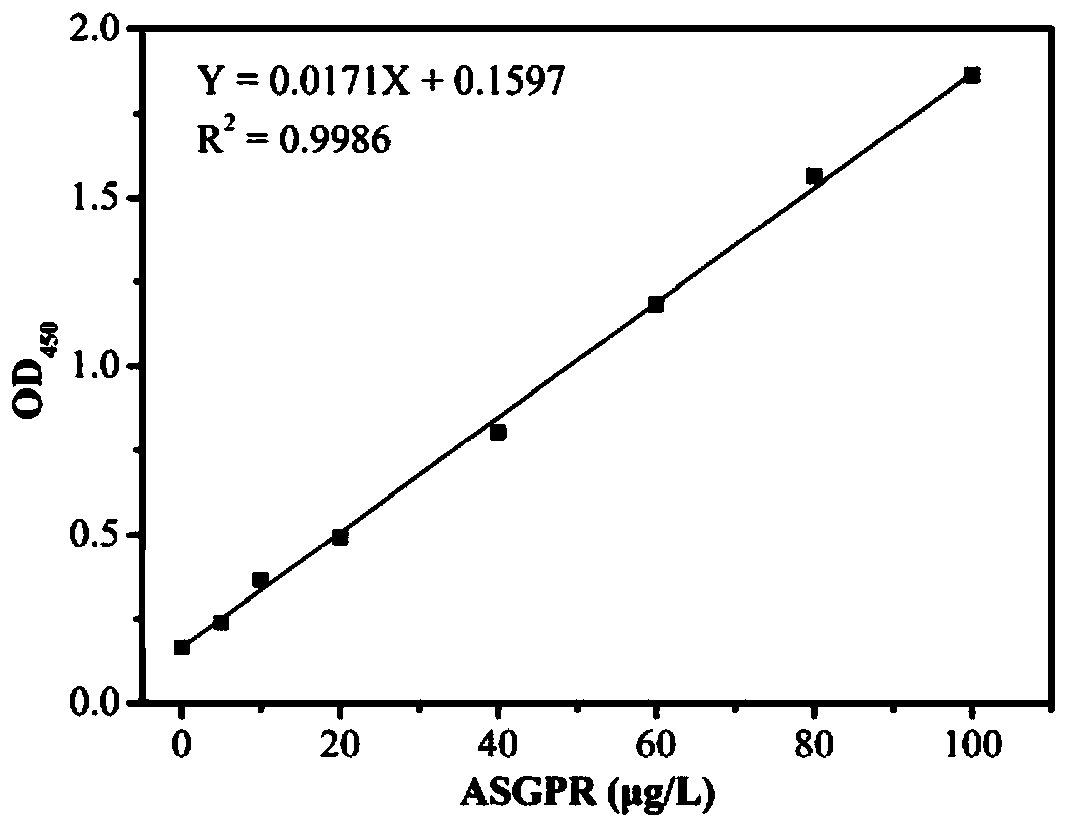Method for detecting human soluble asialoglycoprotein receptor (sASGPR)
A sialoglycoprotein and human body detection technology, applied in the field of immunology detection, can solve the problems of high preparation cost, inaccurate results, time-consuming and labor-intensive, etc., and achieve good repeatability, easy preservation, and cheap price
- Summary
- Abstract
- Description
- Claims
- Application Information
AI Technical Summary
Problems solved by technology
Method used
Image
Examples
Embodiment 1
[0039] Example 1 Preparation of ligand GSA
[0040] Add 20mg of human serum albumin to a clean reaction flask, then add 20mL 0.5M MES biological buffer (pH5.25) to fully dissolve human serum albumin, and then add 108.6mg galactosamine and 62mg EDC to fully dissolve it. After all the samples are completed, put the reaction flask in a 37°C oil bath and react for 16 hours. After the reaction is over, add 3.4mL1M CH to the reaction flask 3 COOH solution (pH 4.5) to terminate the reaction. After the reaction is terminated, the reaction solution is transferred to In the MLtra centrifugal filter, centrifuge at 5000×g for 20 minutes, discard the filtrate in the lower centrifuge tube, and add 10mM CH to the upper filter 3 The COOH solution (pH 7) was restored to the original volume of the sample, centrifuged again at 5000×g, and ultrafiltration was repeated several times to remove unreacted galactosamine and reduce the concentration of sodium acetate. The final GSA solution obtained aft...
Embodiment 2A
[0041] Example 2 Purification of ASGPR Standard
[0042] Take 150mL of the HepG2 cell supernatant collected in advance and centrifuge for 5min (3500×g) in a centrifuge. Take the centrifuged supernatant and add it to 50mL Concentrate in a MLtra centrifugal filter (3500×g), and finally concentrate to a final volume of 8 mL. Add 8 mL of lysis buffer to the concentrated HepG2 cell supernatant, mix well, and lyse at 4°C for 2-3 hours. After the lysis is completed, centrifuge at 20000×g for 30 minutes, transfer the supernatant to a new centrifuge tube, and add 800μL of 1M CaCl 2 , Incubate on ice for 30 min. Centrifuge again at 20000×g for 30 min, and discard the precipitate. The lactose sepharose bead column was pre-equilibrated with 50 mL washing buffer I, and the lactose sepharose beads were fully transferred to a centrifuge tube and combined with the centrifuged cell supernatant at 4°C overnight. The combined lactose sepharose beads were fully transferred to the column, and the ...
Embodiment 3
[0043] Example 3 Selection of primary antibody
[0044] Purchase two ASGPR1 mouse-derived primary antibodies, namely: ASGPR1 / 2(E-1) (Santa Cruz Biotechnology, sc-166633) and ASGPR1(A-5) (Santa Cruz Biotechnology, sc-393849), referred to as Mouse anti-human ASGPR-1 monoclonal antibody, mouse anti-human ASGPR-2 monoclonal antibody. Coat 2 96-well microtiter plates with 10μg / mL GSA, add 100μL GSA to each well, and coat at 4℃ for 24h. After coating, wash with PBST 5 times, 3min each time, and pat dry. Add 300 μL of 1% BSA to each well to seal the whole well, and seal it overnight at 4°C. After closing, wash with PBST 3 times, 3 min each time, and pat dry. Set ASGPR diluents as negative control wells, quality control wells, and 0.15μg / mL, 0.50μg / mL, 2.00μg / mL, 8.00μg / mL ASGPR standards as sample wells, and add the negative control and sample to the enzyme in turn In the standard plate, the sample is made into 4 replicate wells, and the sample volume per well is 100μL. After adding ...
PUM
 Login to View More
Login to View More Abstract
Description
Claims
Application Information
 Login to View More
Login to View More - R&D
- Intellectual Property
- Life Sciences
- Materials
- Tech Scout
- Unparalleled Data Quality
- Higher Quality Content
- 60% Fewer Hallucinations
Browse by: Latest US Patents, China's latest patents, Technical Efficacy Thesaurus, Application Domain, Technology Topic, Popular Technical Reports.
© 2025 PatSnap. All rights reserved.Legal|Privacy policy|Modern Slavery Act Transparency Statement|Sitemap|About US| Contact US: help@patsnap.com



